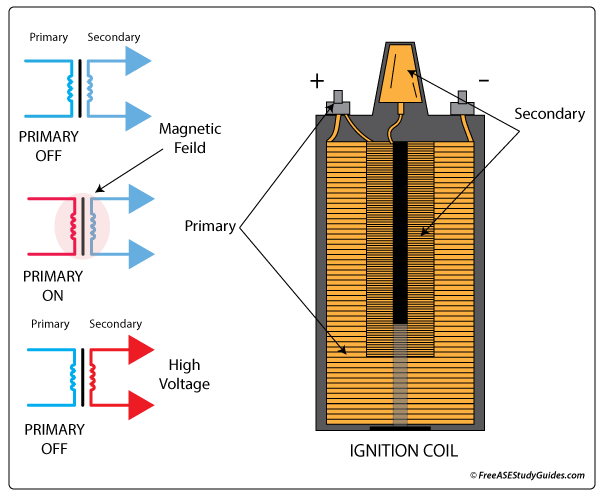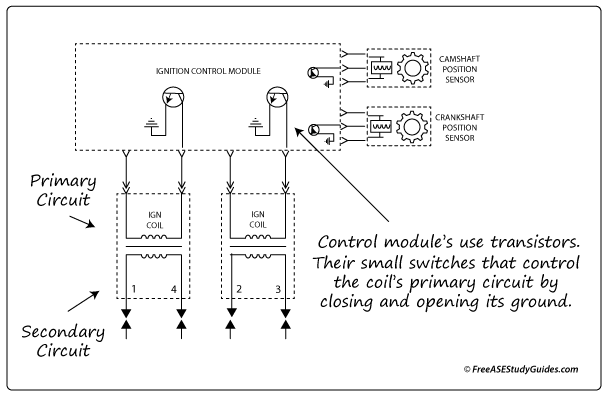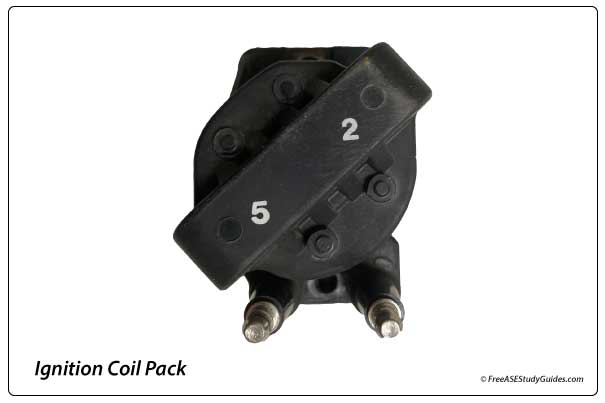Ignition Coils

Ignition coils produce the spark necessary for combustion. They are a member of both the primary and the secondary ignition circuits. Through induction, today's coils multiply 12 volts of battery voltage to 25k to 40k volts.
They have two coils of wire wrapped around a soft iron core. The primary winding contains fewer (a couple hundred) windings of thicker insulated wire. The primary windings are wrapped around the secondary windings. The secondary coil includes thousands of fine windings wrapped around the iron core.

When turned on, the primary circuit creates a magnetic field. This magnetic field passes through the secondary winding and iron core, inducing a voltage in the secondary windings. When the primary circuit is suddenly opened, voltage passes through. The secondary's fine windings multiply it to thousands of volts before passing through the secondary circuit to fire the spark plug. The more windings a coil has, the more voltage it produces.

The ignition module is often part of the engine control module. It switches the primary circuit on and off. It uses signals from the crankshaft and camshaft position sensors to locate cylinder #1 during startup. Once the engine starts, it uses these signals and other sensor signals, such as the ECT and the TPS, to determine dwell (on time) and spark intensity.
Reserve Voltage

Today's ignition coils are powerful, creating thousands of volts. When an engine idles, it typically requires about 10k volts to begin combustion. However, when under a load, it needs a lot more voltage. The difference between the voltage necessary for normal operation and the voltage required for passing or climbing steep hills (maximum voltage) is considered reserve voltage. As an ignition coil ages and gets weaker, its reserve voltage diminishes. As a result, a faulty coil will reveal itself as a misfire when placed under a load.